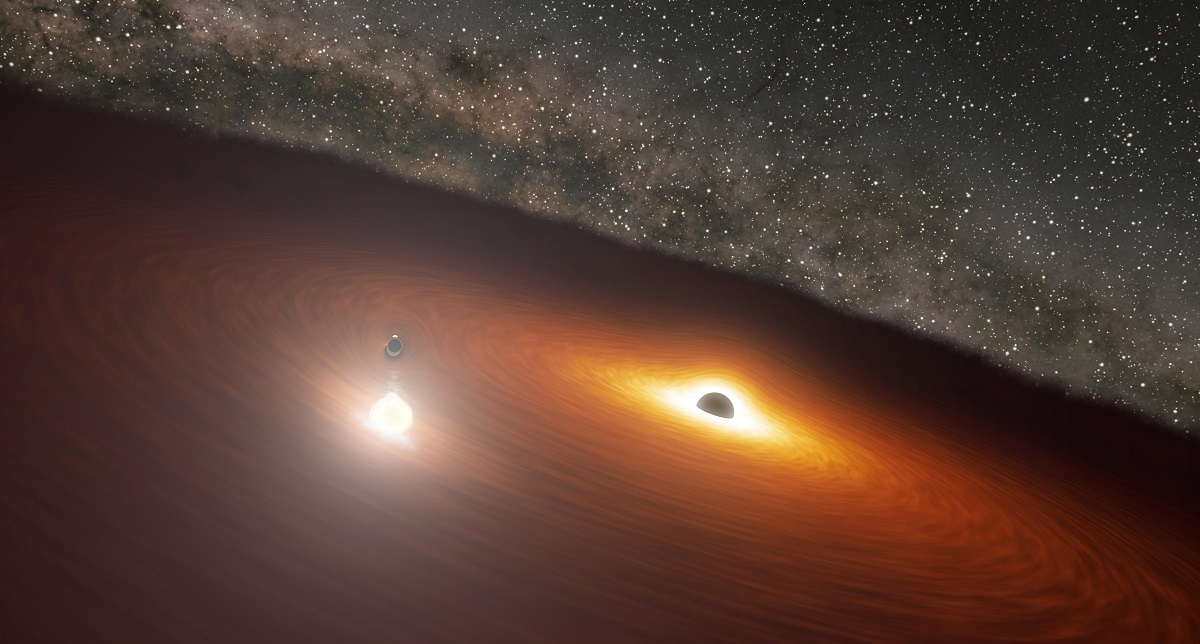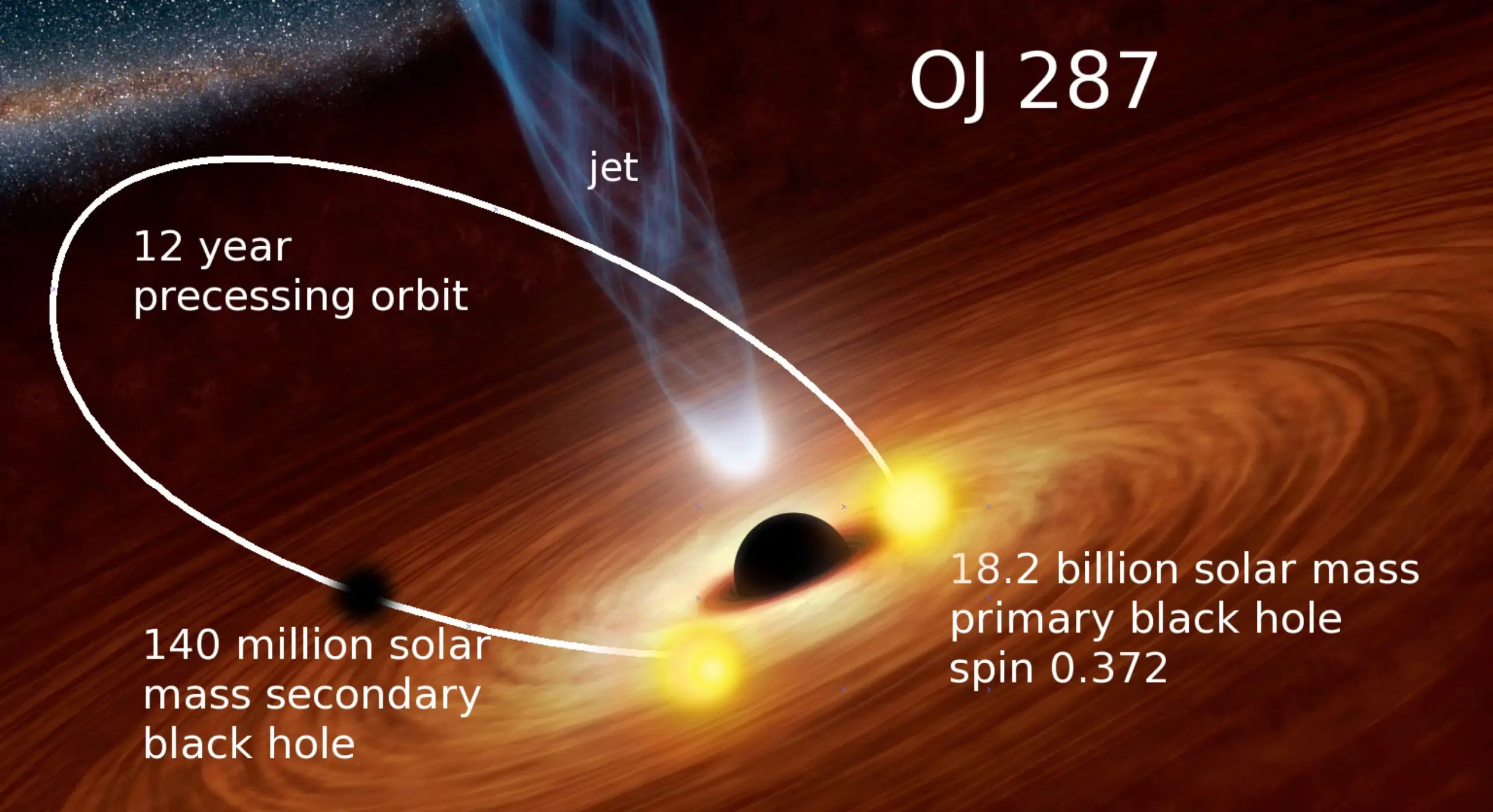Astronomers discover second supermassive black hole in active galaxy OJ 287 - 150 million times more massive than the Sun

Astronomers have finally managed to detect the presence of a second supermassive black hole in the active galaxy OJ 287. The quasar has been observed since the late 19th century.
Here's What We Know
OJ 287 is approximately 5 billion light years away. Although scientists have been observing it for over 130 years, evidence of a second supermassive black hole has only just been discovered. The key reason is the galaxy's vast distance from us and the short distance between the two holes, causing the signals to merge into a single point.
The detected black hole has a mass of about 150 solar masses. It was difficult to detect because it is the second most massive black hole in the Universe. It is about 18 billion times more massive than the Sun.

The activity of the smaller of the two supermassive black holes has been detected in observations from 2021 to 2022. Polish astronomers recorded a bright flare that lasted less than 24 hours. Simulations have shown that the flare was not a relativistic jet of a large black hole but a moment when a less massive black hole passed through the accretion disk of a second black hole, resulting in an energy release.
Scientists will continue to monitor the active galaxy OJ 287. Observations of the quasar are expected to provide data on the physics of the processes occurring there that cannot be replicated in Earth's scientific laboratories.
Source: ScienceDaily